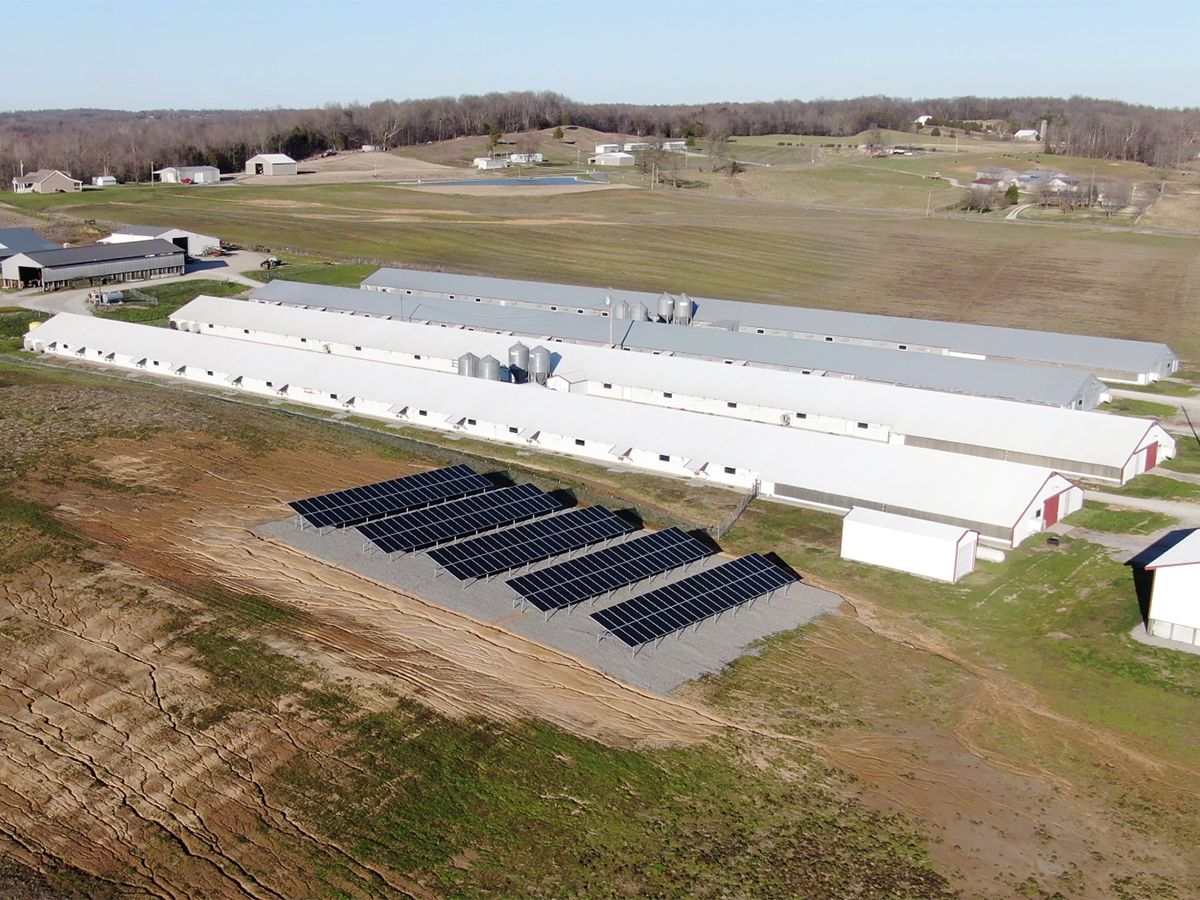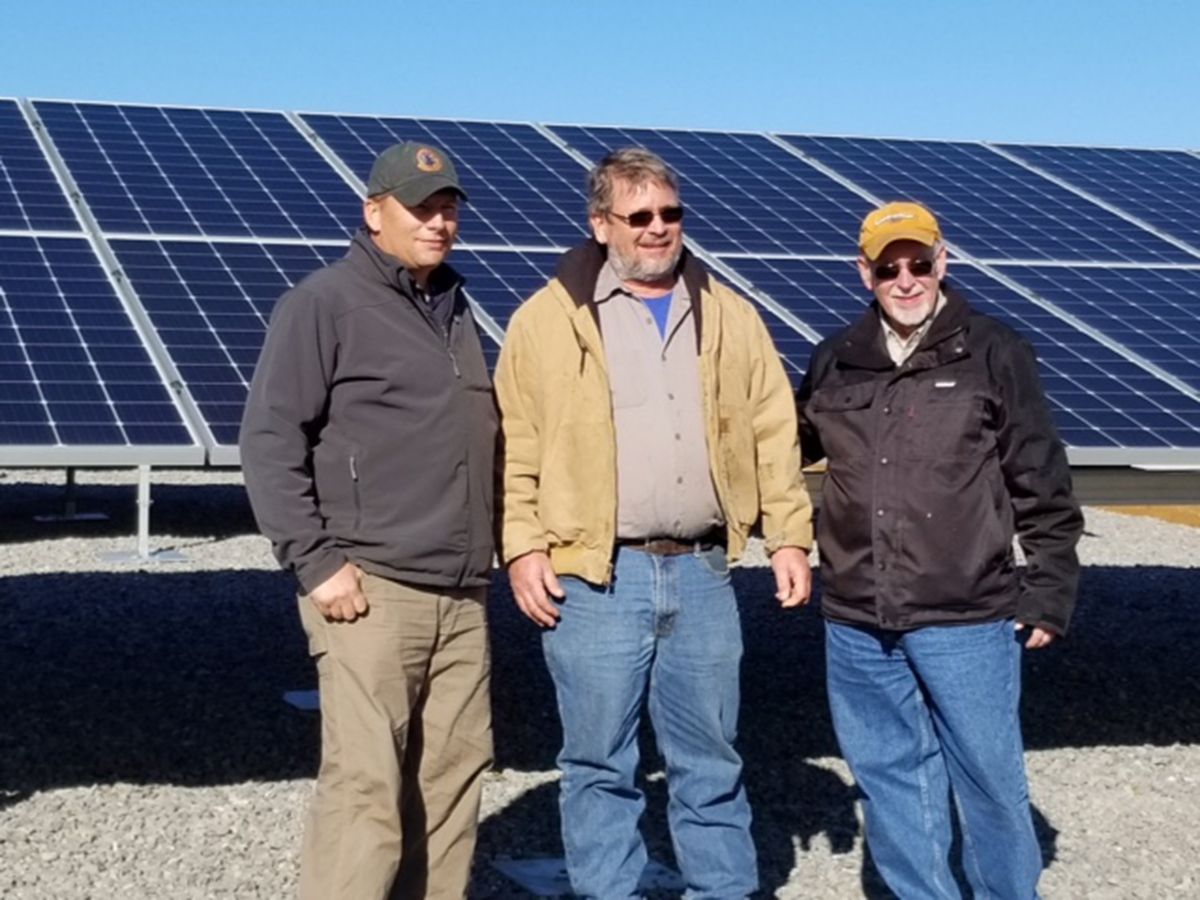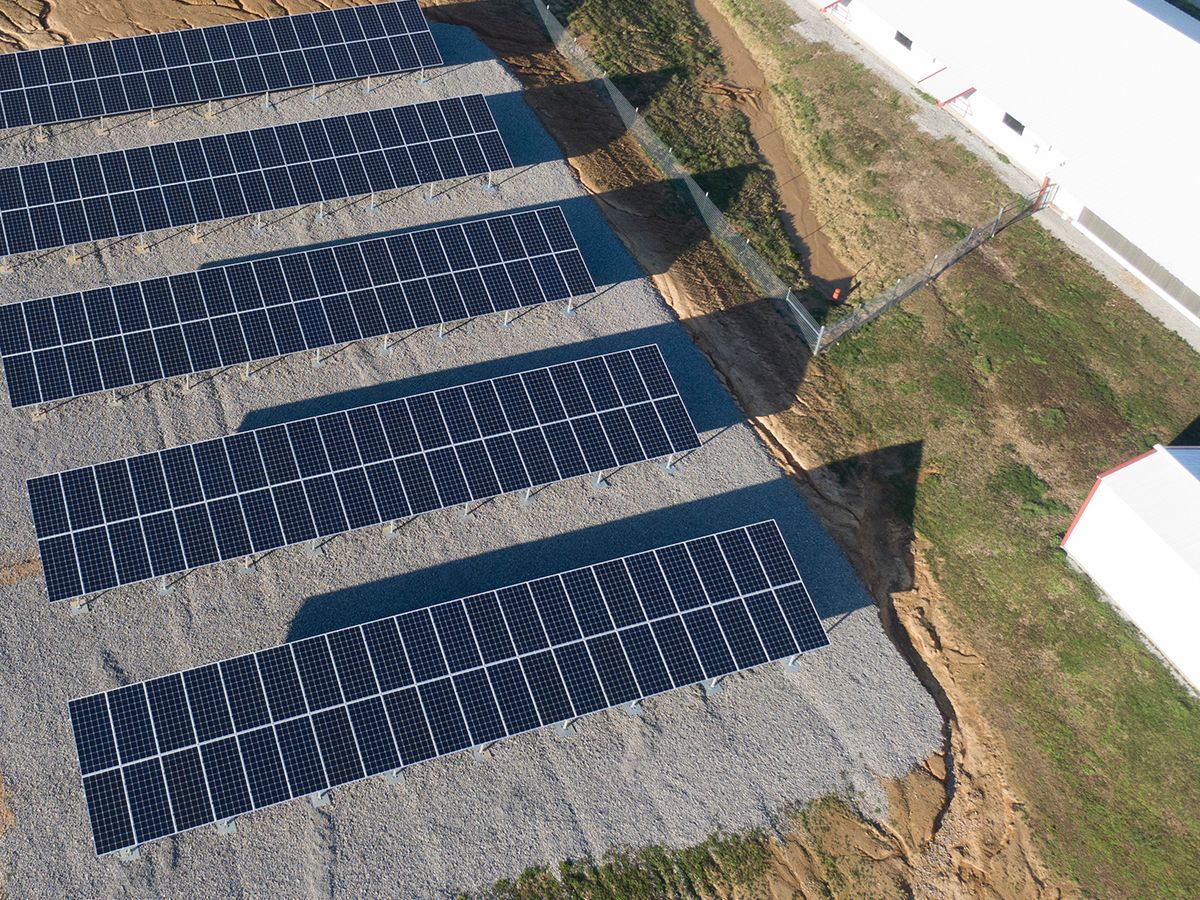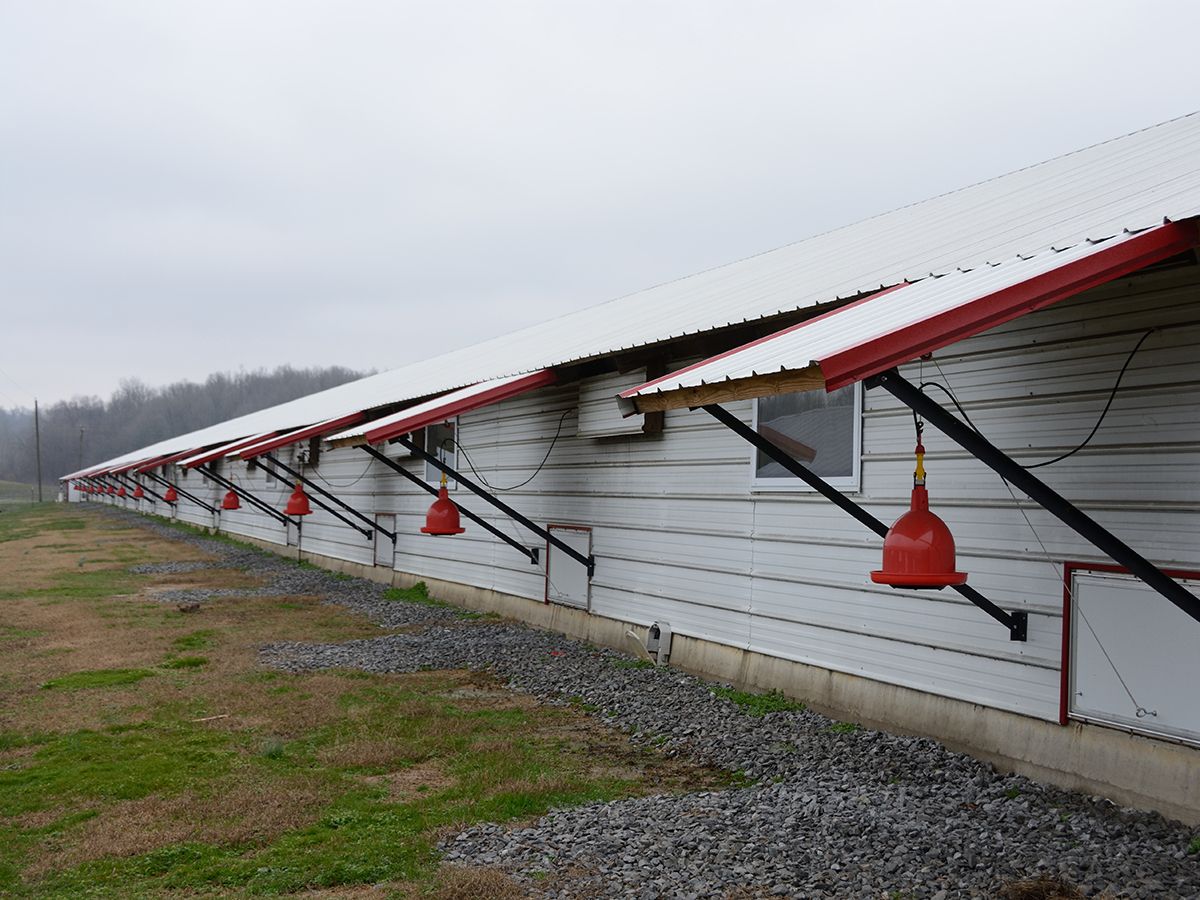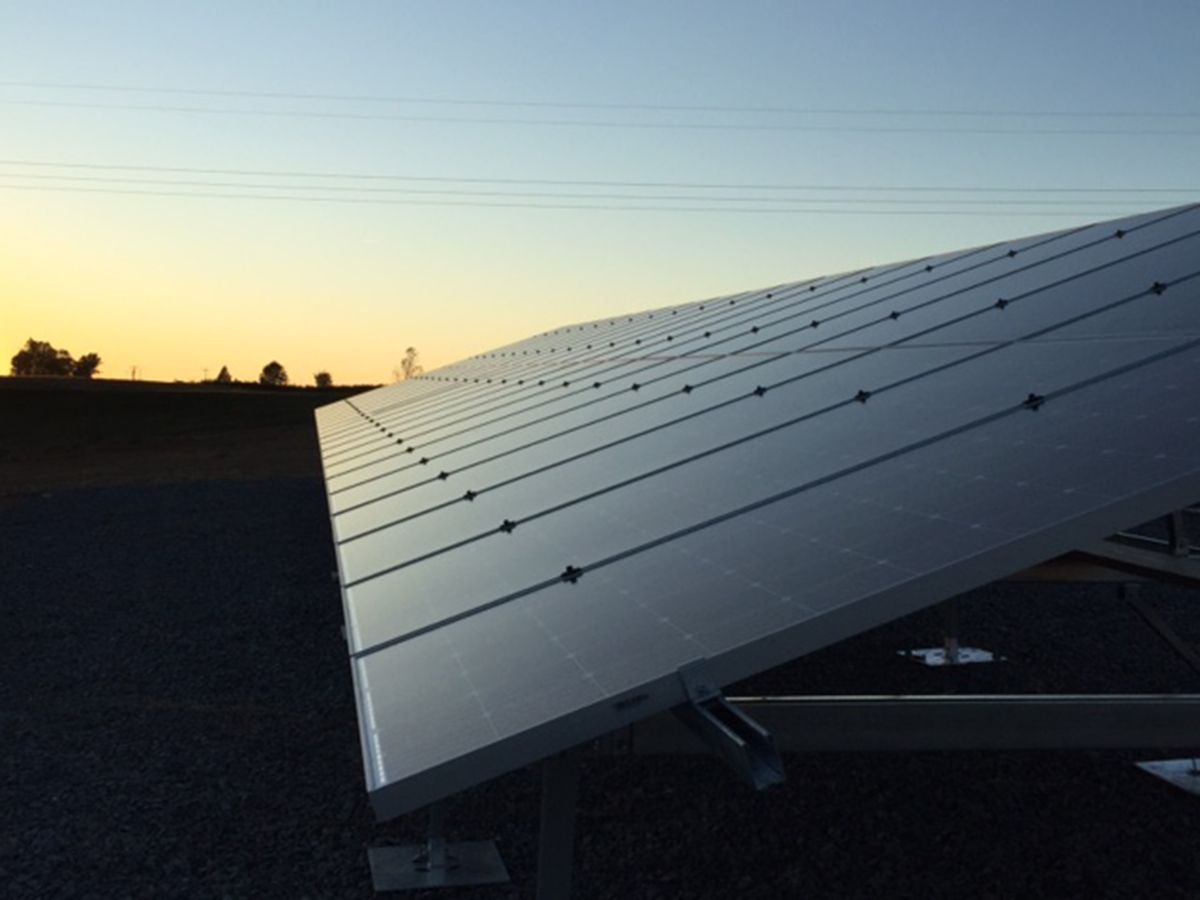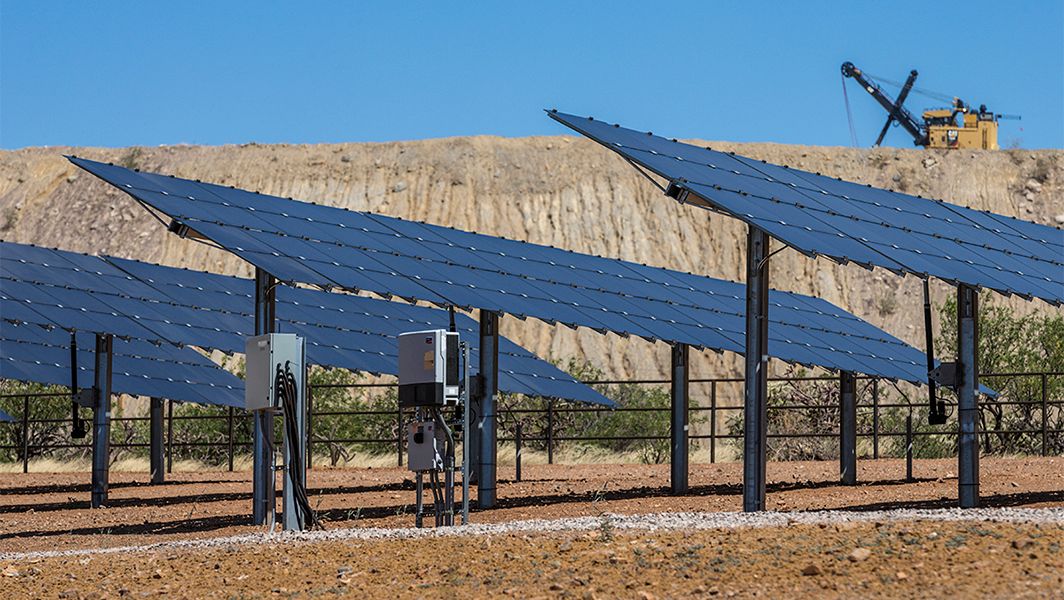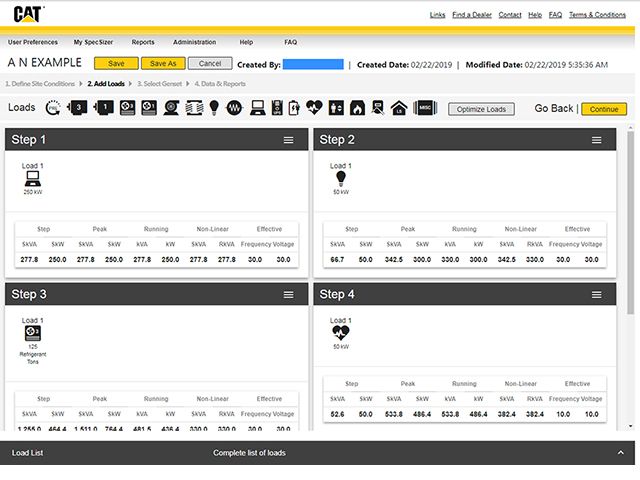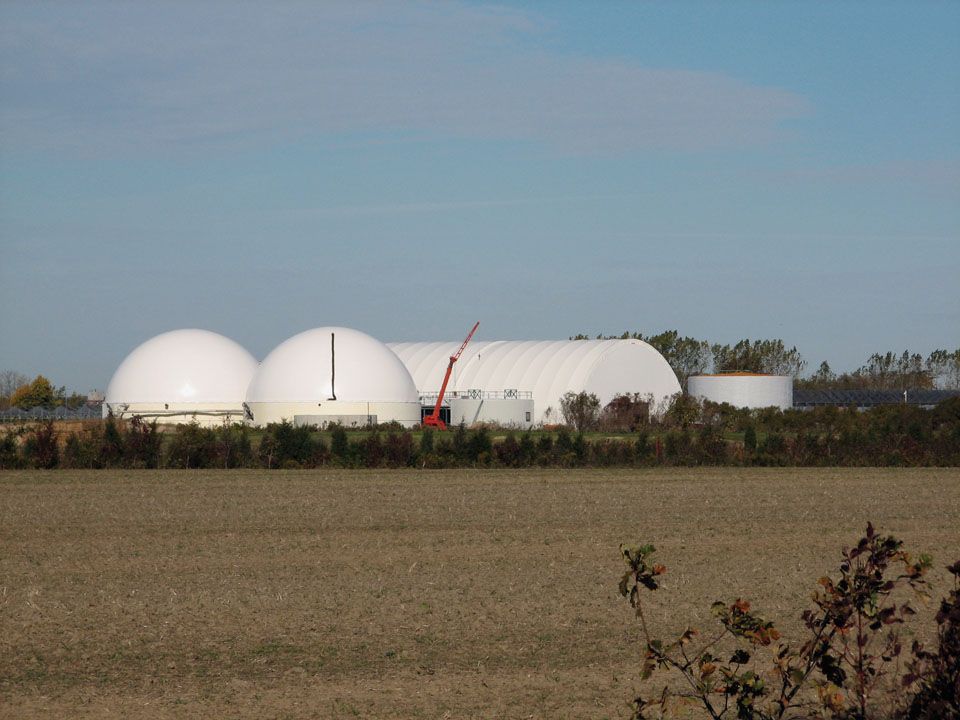Solar Power Keeps Costs Down At Poultry Farm
As a contract farmer for a national food company, Roger Shocklee raises nearly half a million chickens each year at Buck Creek Farm in Livermore, Kentucky. Five times a year, four 20,000-square-foot poultry barns each house about 25,000 chickens, which take anywhere from 48 to 51 days to raise. Because Buck Creek Farm must follow a set protocol for raising the chickens, the buildings are climate controlled to maintain specific temperatures during the growing cycle. With fans running continuously for adequate ventilation of the poultry buildings, a power outage could be catastrophic.






The farm’s energy bill is its largest expense, representing about 50 percent of total operating costs. Buck Creek Farm saw a 42 percent increase to its utility bill when various large industrial users dropped off the local power grid.
So, when the ag manager from local Cat® dealer Boyd Cat spoke to the benefits of Cat solar panels on social media, Shocklee saw a way to access a convenient form of renewable energy that could offset future price increases in utility power. By installing solar panels, Buck Creek Farm would also receive a 25 percent grant from the USDA Rural Energy for America Program, a 30 percent federal income tax credit, and a one-to-one energy credit from the utility for every kilowatt put back on the grid.
Two months later, Shocklee and Boyd Cat finished the installation of a 70 kW solar power system. Featuring monocrystalline panels and inverters, the system provides reliable energy to the farm, while the combination of tax and utility credits reduces its energy bill by nearly 75 percent annually. Additionally, Buck Creek Farm will likely realize a cumulative cash flow of $530,000 over the 25-year life of the system.
“My decision to implement a solar module system was reinforced by the fact that Caterpillar has been around for nearly 100 years. And the dealer has been around just as long. So that gave me confidence that our project would be supported in the future.”



